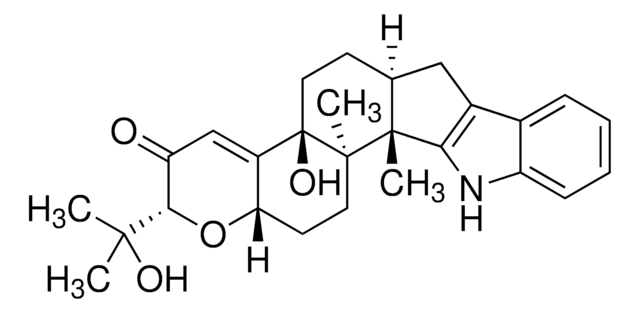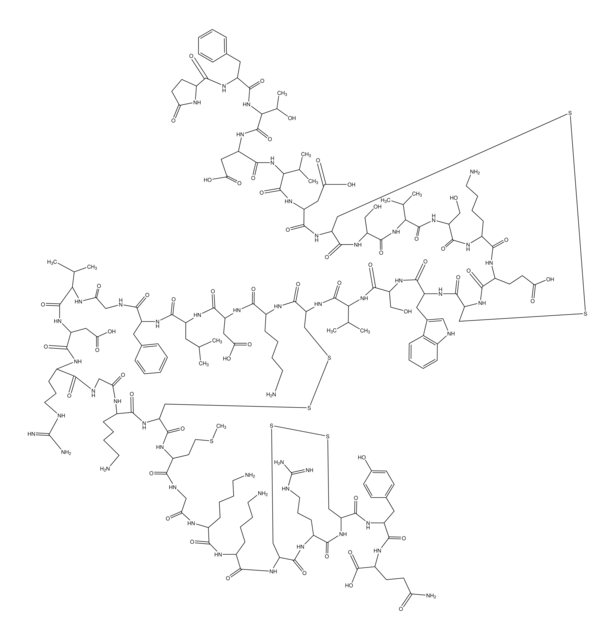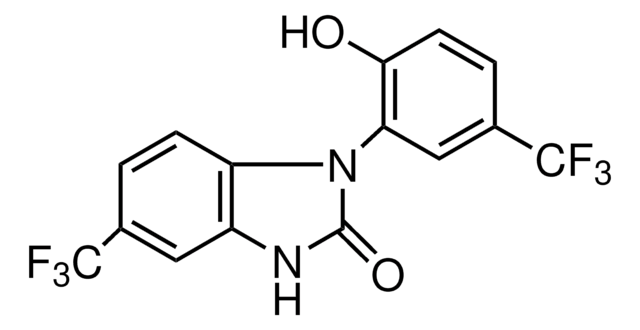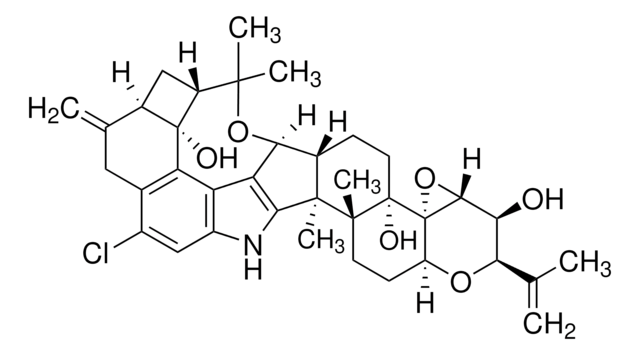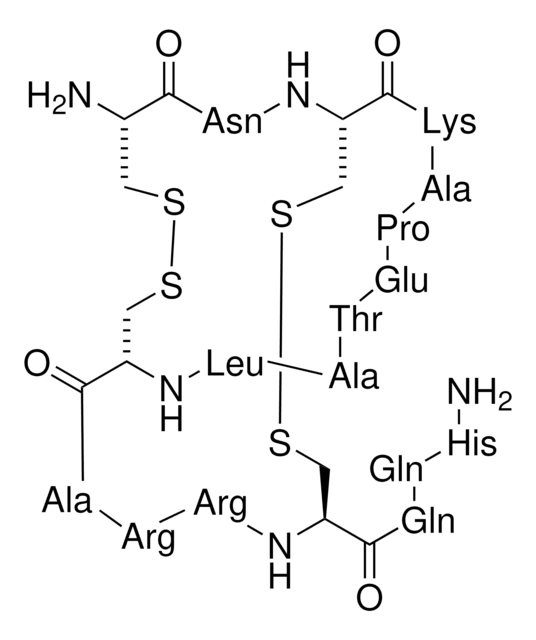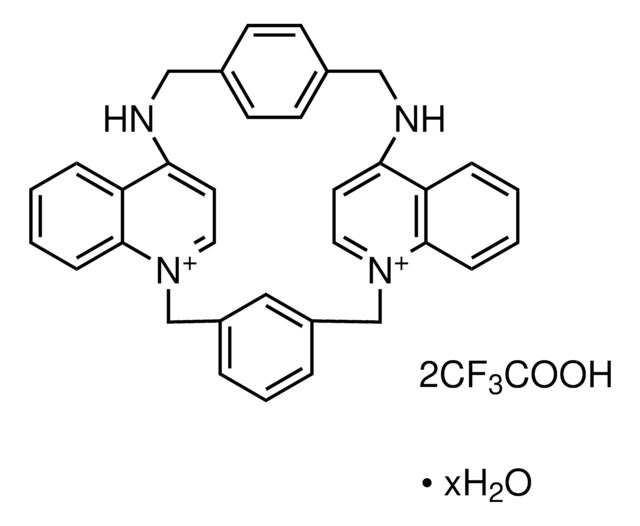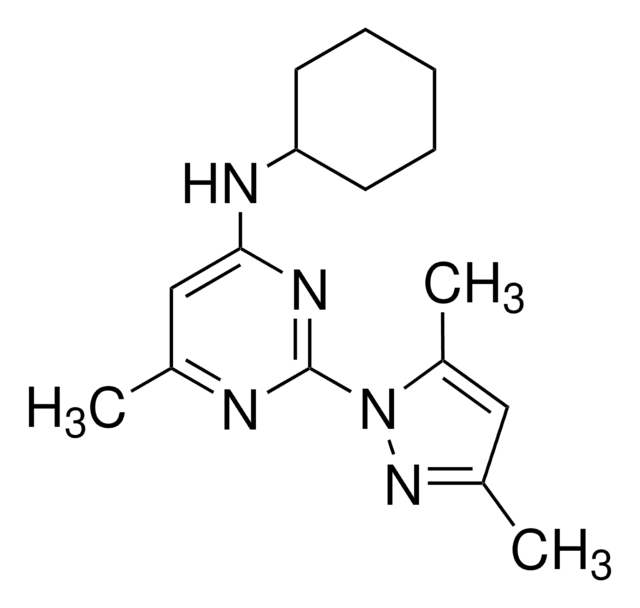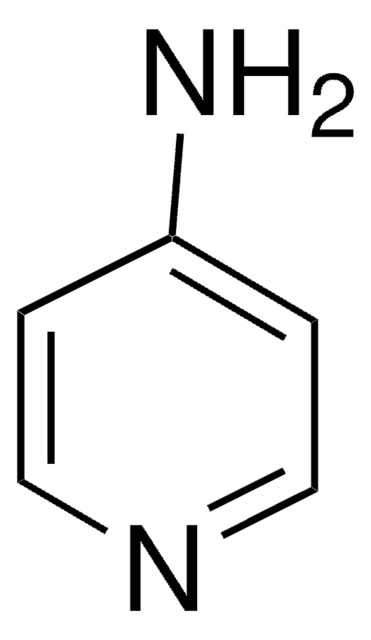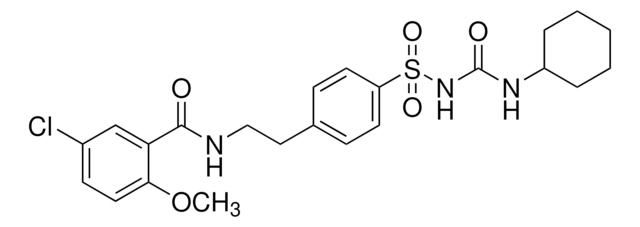I5904
Iberiotoxin, recombinant from Mesobuthus tamulus
≥98% (HPLC), recombinant, expressed in E. coli
Synonym(e):
IbTX
Anmeldenzur Ansicht organisationsspezifischer und vertraglich vereinbarter Preise
Alle Fotos(1)
About This Item
Empirische Formel (Hill-System):
C179H276N50O56S7
Molekulargewicht:
4248.86
UNSPSC-Code:
12352200
PubChem Substanz-ID:
NACRES:
NA.77
Empfohlene Produkte
Amino Acid Sequence
Glp-Phe-Thr-Asp-Val-Asp-Cys-Ser-Val-Ser-Lys-Glu-Cys-Trp-Ser-Val-Cys-Lys-Asp-Leu-Phe-Gly-Val-Asp-Arg-Gly-Lys-Cys-Met-Gly-Lys-Lys-Cys-Arg-Cys-Tyr-Gln [Disulfide Bridges: 7−28; 13−33; 17−35]
Anwendung
Iberiotoxin, recombinant from Mesobuthus tamulus has been used as an inhibitor of large-conductance calcium-activated K+ channels to study its effect on the NLRP3 (nucleotide-binding oligomerization domain-like receptor containing pyrin domain 3) inflammasome activation in bone marrow-derived macrophages (BMDMs). It has also been used to block Ca2+- activated K+ channels to determine interleukin(IL)-1β in BMDCs following inflammasome activation.
Biochem./physiol. Wirkung
The single chain peptide iberiotoxin (IbTX) is a selective and reversible inhibitor of high-conductance calcium-activated potassium channels (PK,Ca). It occurs naturally in the venom of the scorpion Buthus tamulus. IbTX also modulates the binding of charybdotoxin (CbTX) to smooth muscle sarcolemmal membranes in a non-competitive manner. IbTX is similar in size to CbTX and shares considerable sequence homology with CbTX. However, IbTX differs in its overall charge in having one fewer basic and four more acidic residues than CbTX.
Exhibits the same activity as the natural form of the toxin
Leistungsmerkmale und Vorteile
This compound is featured on the Potassium Channels page of the Handbook of Receptor Classification and Signal Transduction. To browse other handbook pages, click here.
Angaben zur Herstellung
Soluble in aqueous buffers. Stock solutions of 1 μM can be aliquoted and stored at -20 °C for up to 3 months.
Signalwort
Danger
H-Sätze
Gefahreneinstufungen
Acute Tox. 1 Inhalation - Acute Tox. 2 Dermal - Acute Tox. 2 Oral
Lagerklassenschlüssel
6.1A - Combustible acute toxic Cat. 1 and 2 / very toxic hazardous materials
WGK
WGK 3
Persönliche Schutzausrüstung
Eyeshields, Faceshields, Gloves, type P3 (EN 143) respirator cartridges
Hier finden Sie alle aktuellen Versionen:
Besitzen Sie dieses Produkt bereits?
In der Dokumentenbibliothek finden Sie die Dokumentation zu den Produkten, die Sie kürzlich erworben haben.
Kunden haben sich ebenfalls angesehen
The TWIK2 potassium efflux channel in macrophages mediates NLRP3 inflammasome-induced inflammation
Di A, et al.
Immunity, 49(1), 56-65 (2018)
Targeting TMEM176B Enhances Antitumor Immunity and Augments the Efficacy of Immune Checkpoint Blockers by Unleashing Inflammasome Activation
Segovia M, et al.
Cancer Cell, 35(5), 767-781 (2019)
Yan Li et al.
Antioxidants (Basel, Switzerland), 9(11) (2020-11-19)
Opening of large conductance calcium-activated and voltage-dependent potassium (BKCa) channels hyperpolarizes plasma membranes of smooth muscle (SM) to cause vasodilation, underling a key mechanism for mediating uterine artery (UA) dilation in pregnancy. Hydrogen sulfide (H2S) has been recently identified as
Anke Di et al.
Immunity, 49(1), 56-65 (2018-07-01)
Potassium (K+) efflux across the plasma membrane is thought to be an essential mechanism for ATP-induced NLRP3 inflammasome activation, yet the identity of the efflux channel has remained elusive. Here we identified the two-pore domain K+ channel (K2P) TWIK2 as
Mercedes Segovia et al.
Cancer cell, 35(5), 767-781 (2019-05-16)
Although immune checkpoint blockers have yielded significant clinical benefits in patients with different malignancies, the efficacy of these therapies is still limited. Here, we show that disruption of transmembrane protein 176B (TMEM176B) contributes to CD8+ T cell-mediated tumor growth inhibition by
Unser Team von Wissenschaftlern verfügt über Erfahrung in allen Forschungsbereichen einschließlich Life Science, Materialwissenschaften, chemischer Synthese, Chromatographie, Analytik und vielen mehr..
Setzen Sie sich mit dem technischen Dienst in Verbindung.